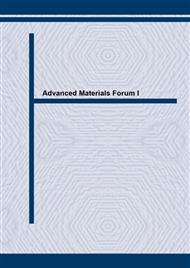[1]
G. Bachmann, W. Berthold and H. Oechsner, Thin Sol.Films, 174 (1989) p.149
Google Scholar
[2]
O.M.N.D. Teodoro, J.A.M.C. Silva and A.M.C. Moutinho, Vacuum 46, (1995) p.1205
Google Scholar
[3]
G. Bachmann, H. Oechsner, J. Scholtes and Fresenius, Z.Anal.Chem., 329 (1987) p.195
Google Scholar
[4]
A.P. Janssen, P. Akhter, C.J. Harland and J.A. Venables, Surf.Sci., 93 (1980) p.453
Google Scholar
[5]
A. Benninghoven, F.G. Rüdenauer, H.W. Werner, Secondary Ion Mass Spectrometry, Chemical Analysis Series Vol 86 ed. P.J. Elving, J.D. Winefordner (Wiley, New York 1987)
DOI: 10.1016/s0003-2670(00)85925-5
Google Scholar
[6]
A.A. Dias, R. Carrapa, M.T. Barros, T. Almeida Gasche, O.M.N.D. Teodoro, M.L. Costa, M.H. Vasconcelos Cabral and A.M.C. Moutinho, Vacuum 64, (2002) pp.445-6.5 7.0 7.5 8.0 Relative Work Function (eV) Figure 4- The removal of the barium layer on a Ba/Ag surface is very well observed by work function microscopy. The measured work function difference is about 2 eV in agreement with the known values for clean Ag and Ba on Ag.
DOI: 10.1016/s0042-207x(01)00331-1
Google Scholar


